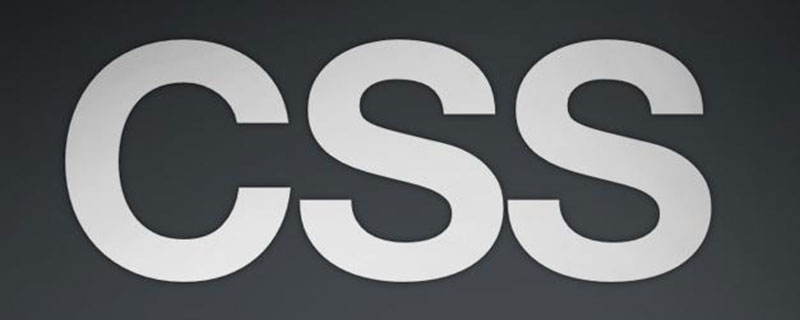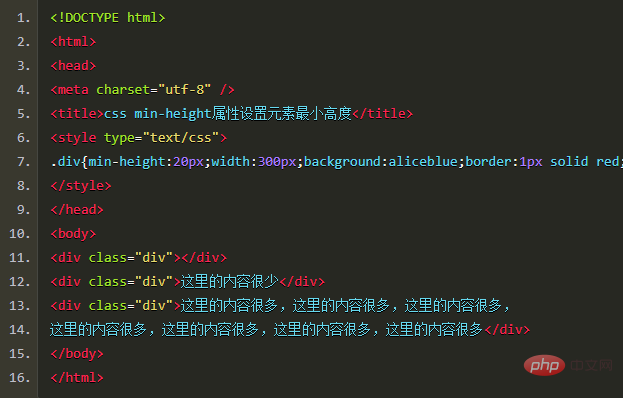Home > Article > Web Front-end > How to use the min-height attribute of css

min-height attribute definition and usage
In css, the min-height attribute is used to define the minimum height of an element , that is, the element can be taller than the specified value, but cannot be shorter than it. When there is too much content in the element and the minimum height cannot be accommodated, the height of the element will increase as the content increases. This property does not allow negative values to be specified, and the minimum height set does not include padding, borders, or margins.
The min-height attribute is used to implement: the element must have a certain height, but does not want to be fixed. When the element content is less than the minimum height of the element, the element maintains the minimum height unchanged. When the element content is greater than the element's At minimum height, the height of the element will increase as the element's content increases.
min-height attribute similar attributes
max-height attribute: Set the maximum height of the element
max-width attribute: Set the maximum width of the element
min-width attribute: Set the minimum width of the element
min-height attribute syntax format
css syntax: min-height:length/%/inherit
JavaScript syntax: object.style.minHeight="10px"
Attribute value description
length: Defines the minimum height of the element, the default value is 0
%: Defines the minimum height based on the percentage of the block-level object that contains it
inherit: Inherits the value of the min-height attribute from the parent element
Example

The above is the detailed content of How to use the min-height attribute of css. For more information, please follow other related articles on the PHP Chinese website!